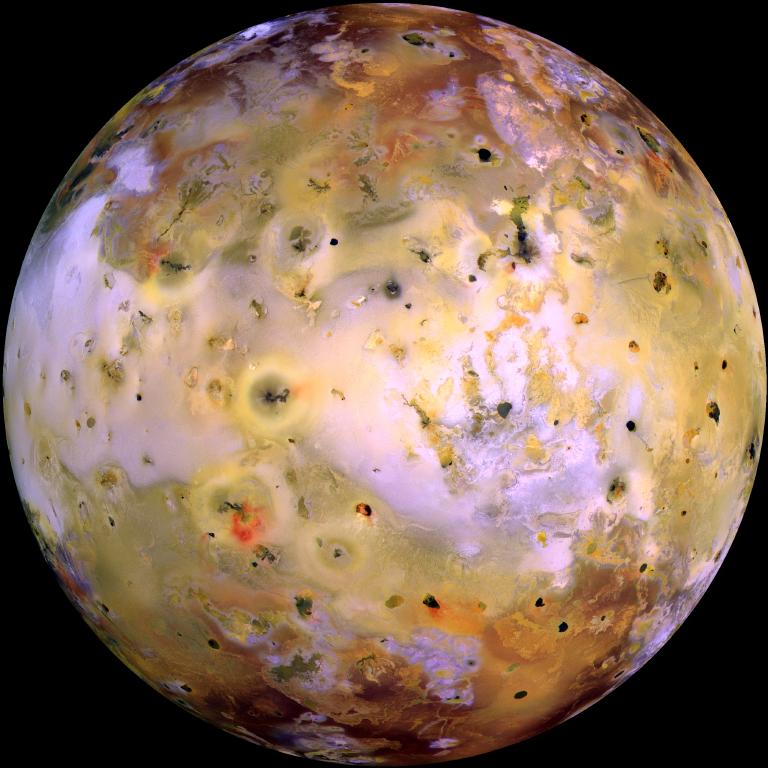

NASA's Galileo spacecraft acquired its highest resolution images of Jupiter's volcanic moon Io on July 3, 1999 during its closest pass by Io since it entered orbit around Jupiter in late 1995. This color mosaic uses the near-infrared, green and violet filters (slightly more than the visible range) of the spacecraft's camera, processed to enhance more subtle color variations. Most of Io's surface has pastel colors, punctuated by black, brown, green, orange, and red areas near the active volcanic centers.
The improved resolution reveals small-scale color areas which were not recognized previously and which suggest that the lava and sulfurous deposits are composed of complex mixtures. Some of the bright (whitish), high-latitude (near the top and bottom) deposits have an ethereal quality like a transparent covering of frost. Bright red areas were seen in previous images only as diffuse deposits. However, they now appear as both diffuse deposits and sharp linear features like fissures. Some volcanic centers have bright and colorful flows, perhaps due to flows of sulfur (rather than silicate) lava. In this region of Io, bright, white material can also be seen to emanate from linear rifts and cliffs.
Comparison of this mosaic to previous Galileo images reveals many changes due to ongoing volcanic activity.
Galileo is scheduled to make two close passes of Io in October and November. Most of the high-resolution targets for these flybys are seen on the hemisphere shown here.
North is to the top of the picture, and the Sun illuminates the surface from almost directly behind the spacecraft. This illumination is good for imaging color variations, but poor for imaging topographic shading. However, some topographic shading can be seen here due to the combination of relatively high resolution (1.3 kilometers or 0.8 miles per picture element) and rugged topography over parts of Io. The mosaic is centered at 0.3 degrees north latitude and 137.5 degrees west longitude. The image was taken at a distance of about 130,000 kilometers (81,000 miles) by Galileo's onboard solid state imaging camera.
Image produced by: Moses Milazzo, Planetary Image Research Lab. (PIRL), Lunar and Planetary Lab. (LPL), University of Arizona
The Jet Propulsion Laboratory, a division of the California Institute of Technology in Pasadena, manages the Galileo mission for NASA's Office of Space Science, Washington, D.C. Additional information about Galileo and its discoveries is available on the Galileo mission home page at http://galileo.jpl.nasa.gov/. Background information and educational context for the images can be found at http://galileo.jpl.nasa.gov/images/io/ioimages.html.
NASA's Planetary Photojournal PIA-02309
August 27, 1999